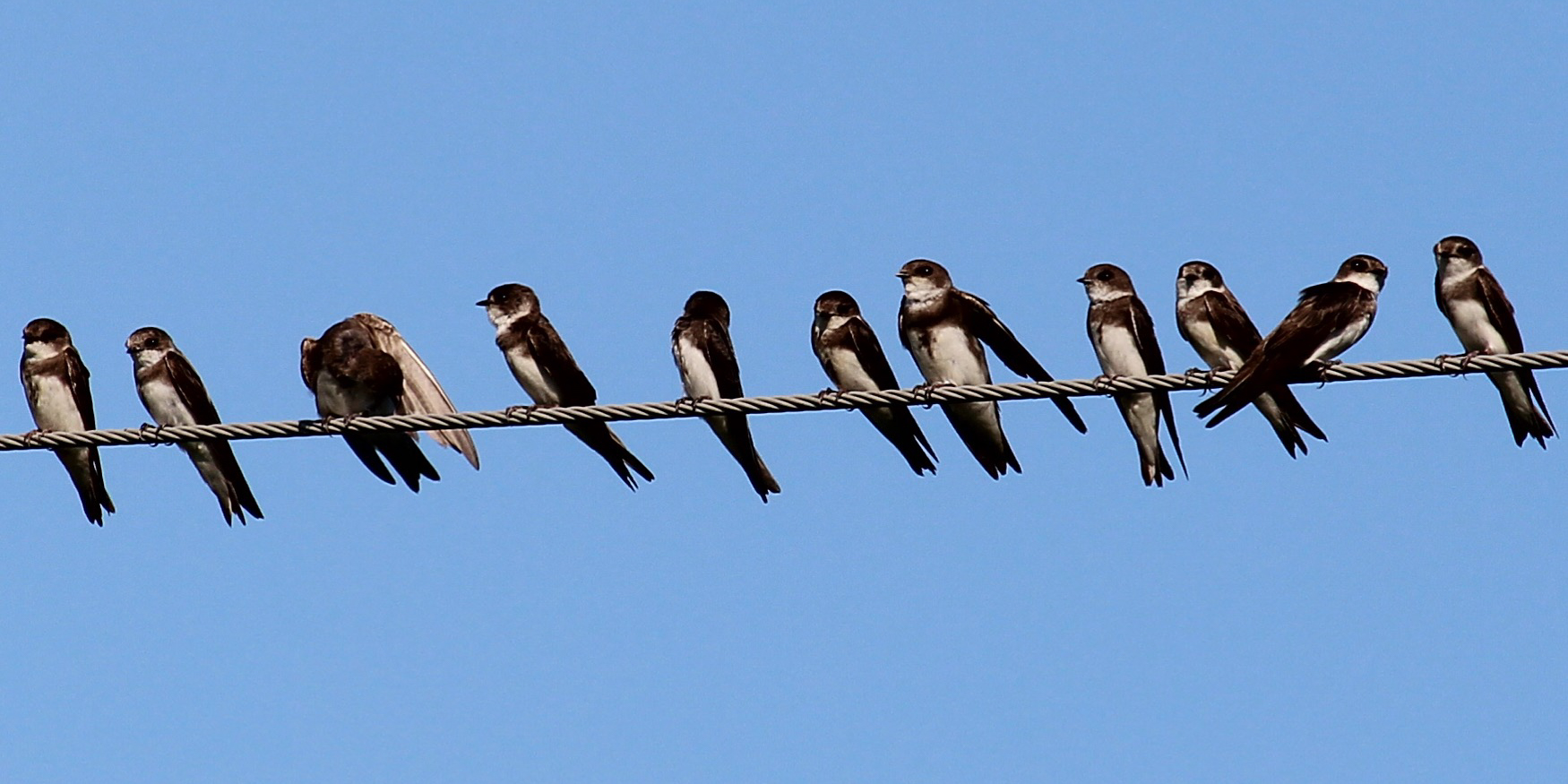
Bank Swallow Background Information
Bank Swallow Photo: May Haga
Bank Swallows are a bird species belonging to the Aerial Insectivore guild of birds. Aerial Insectivores are a group of birds that eat insects while flying, which includes swallows, swifts, nightjars, and flycatchers. Bank Swallows are Canada’s smallest swallow species. Bank Swallows average body length is 12 cm and they weigh between 12.7 to 15 g, or about the weight of two toonies. They have dark brown upper parts and white underparts with a large dark brown band across the upper chest. The brown band across the chest helps identify them from other swallow species in Canada.

Bank Swallow colony with Red Fox Photo: Megan Hiebert
Bank Swallows are a colonial species that nest in groups ranging from a few individuals up to several thousand. For nesting, they dig a burrow about 60 to 90 cm deep into near-vertical banks with erodible substrate, often along rivers, streams, lakes, and coastal cliffs. Bank Swallows will also take advantage of human-made habitat for nesting, such as, road cuts and in pits and quarries.
Bank Swallows are Neotropical migrants, which means they breed in Canada and the US during our summer months. During our winter months, they fly south to South America, mainly the Southern Cone Grasslands in Chile. During migration and the breeding season, Bank Swallows roost in mix-species flocks often in wetlands.
Where do Bank Swallows nest?
Bank Swallows nest in colonies along sandy, near-vertical (>70°) slopes, often along river banks or natural coastal bluffs. They will also nest in human-created habitats such as gravel pits or road cuts. Bank Swallows require some erosion to help keep the sand loose for digging, as the male will dig an average of 65 cm into a bank, creating a long burrow with a nest cup at the end.
Where do Bank Swallows eat and rest?
Bank Swallow roosting sites (sites where birds rest and sleep) and foraging sites are often wetlands close to the breeding colony. They roost communally with other swallow species leading to a massive group of birds in one location. Roosting in large groups benefits each swallow by lowering the chances that it will be eaten, and by enabling it to spend less energy while catching food. Communal roosting also helps with body temperature regulation during severe weather events.
Where do Bank Swallows go during winter?
In North America, Bank Swallows breed in the northern United States and all provinces and territories (although rarely in Nunavut) in Canada. They are a neotropical migrant, which means they migrate to Canada in the spring after spending the winter in South and Central America.







